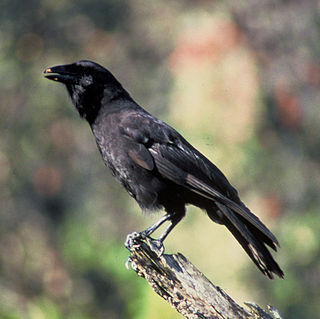
The International Union for Conservation of Nature (IUCN) Red List of Threatened Species, also known as the IUCN Red List or Red Data Book, founded in 1964, is an inventory of the global conservation status and extinction risk of biological species. A series of Regional Red Lists, which assess the risk of extinction to species within a political management unit, are also produced by countries and organizations.

The guenons are Old World monkeys of the genus Cercopithecus. Not all members of this genus have the word "guenon" in their common names; also, because of changes in scientific classification, some monkeys in other genera may have common names that include the word "guenon". Nonetheless, the use of the term guenon for monkeys of this genus is widely accepted.

A species that is extinct in the wild (EW) is one that has been categorized by the International Union for Conservation of Nature as only consisting of living members kept in captivity or as a naturalized population outside its historic range. Classification requires exhaustive surveys conducted within the species' known habitat with consideration given to seasonality, time of day, and life cycle. Once a species is classified as EW, the only way for it to be downgraded is through reintroduction.
This article is a list of biological species, subspecies, and evolutionary significant units that are known to have become extinct during the Holocene, the current geologic epoch, ordered by their known or approximate date of disappearance from oldest to most recent.
The Daghestan pine vole is a species of rodent in the family Cricetidae. It is found in Russia, Georgia, Armenia, and Azerbaijan.
Westraltrachia alterna is a species of air-breathing land snails, a terrestrial pulmonate gastropod mollusk in the family Camaenidae. This species is endemic to Australia.
Westraltrachia is a genus of land snails in the family Camaenidae.
Westraltrachia inopinata is a species of air-breathing land snails, a terrestrial pulmonate gastropod mollusk in the family Camaenidae.
Westraltrachia lievreana is a species of air-breathing land snails, a terrestrial pulmonate gastropod mollusk in the family Camaenidae. This species is endemic to Australia.
Westraltrachia porcata is a species of air-breathing land snails, a terrestrial pulmonate gastropod mollusk in the family Camaenidae. This species is endemic to Australia.
Westraltrachia recta is a species of air-breathing land snails, a terrestrial pulmonate gastropod mollusk in the family Camaenidae. This species is endemic to Australia.
Westraltrachia turbinata is a species of air-breathing land snails, a terrestrial pulmonate gastropod mollusk in the family Camaenidae. This species is endemic to Australia.

Stygobromus is a genus of amphipod crustaceans that live in subterranean habitats. The majority of the listed species are endemic to North America, a smaller number of species are also known from Eurasia. Most of the North American species live in areas which were not covered by the Laurentide Ice Sheet, although a few species seem to have survived under the ice. A number of species are on the IUCN Red List as endangered species (EN) or vulnerable species (VU); one species, S. lucifugus, is extinct.




